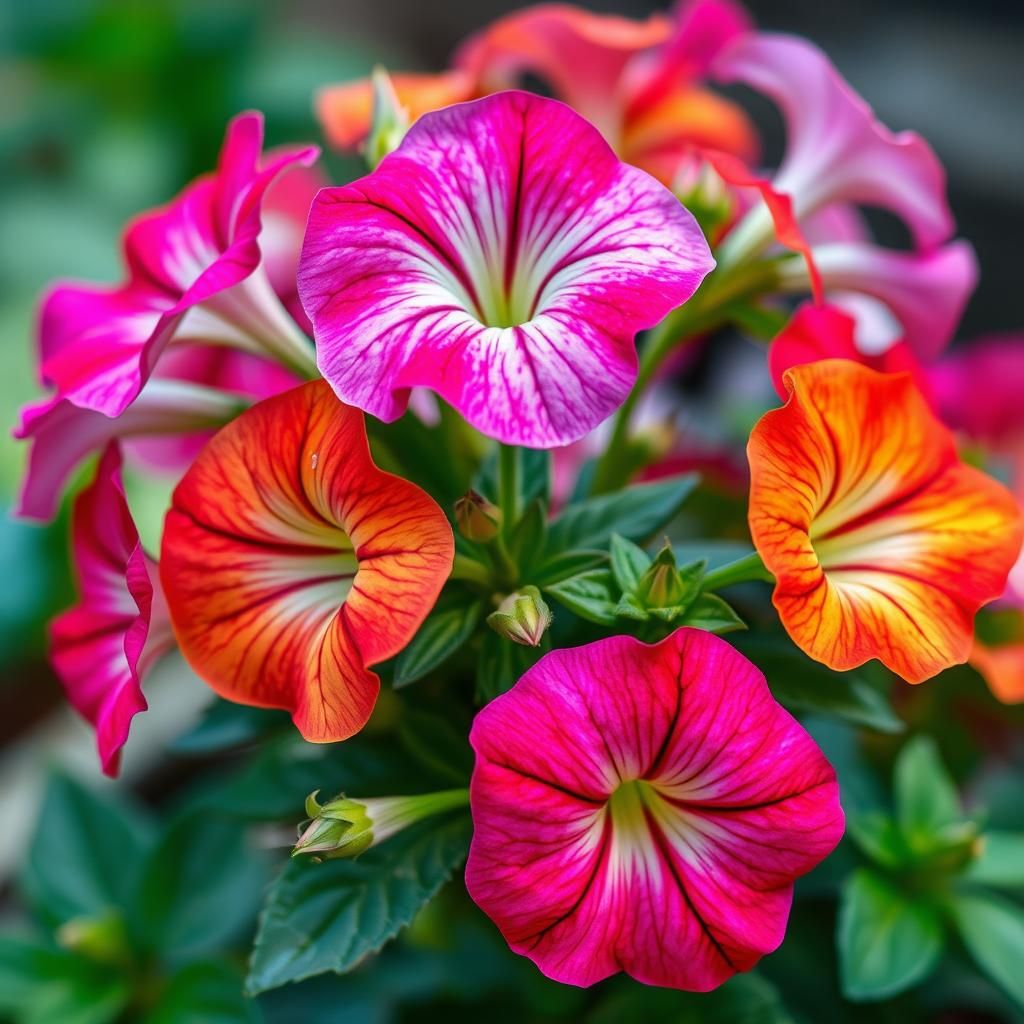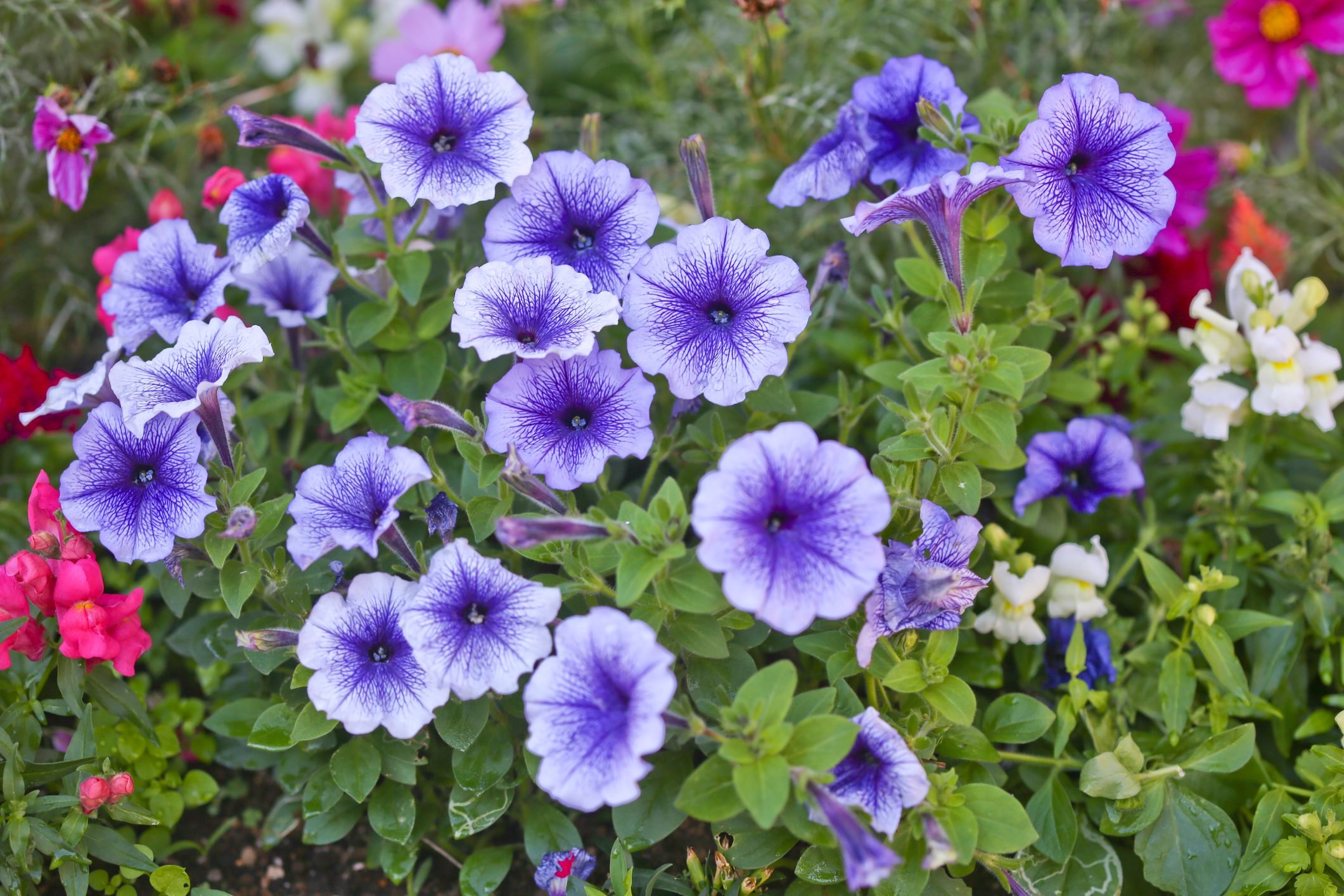Are Petunias Perennial Flowers? Discover the Truth About Their Lifespan and Care

Petunias are beloved for their vibrant colors and versatility in gardens, but many wonder if they are perennial flowers or merely annuals. Understanding their lifespan is crucial for gardeners looking to cultivate these cheerful blooms year after year. In this article, we will explore the truth about petunias, delving into their growth habits, care requirements, and how to extend their lifespan in various climates. Whether you’re a seasoned gardener or a novice looking to brighten your space, this guide will help you navigate the world of petunias and ensure your garden thrives with these stunning flowers.
Are Petunias Perennial Flowers?
Petunias are primarily considered annual flowers, meaning they typically complete their life cycle in one growing season. However, in certain climates, particularly those with warmer winters, petunias may behave as perennials. This means they can survive from season to season without needing to be replanted each year. Their ability to return in subsequent years largely depends on the local climate, care practices, and species of petunia. Most gardeners treat them as annuals, replacing them each year for consistent blooms, but in suitable conditions, they can indeed persist beyond a single growing season.
Climate Effects on Petunia Longevity
The climate plays a significant role in determining whether petunias will act as annuals or perennials. In warmer regions, such as USDA hardiness zones 10 and 11, petunias may survive the winter months and return in the spring. Conversely, in areas with harsh winters, they are less likely to survive outdoor conditions. The temperature fluctuations and frost risks can greatly impact their lifespan.
Understanding Different Petunia Varieties
There are several species and varieties of petunias, each with unique characteristics that influence their hardiness. For instance, Trailing Petunias, often used in containers, may be more sensitive to cold than the sturdier Grandiflora Petunias, which can sometimes withstand cooler temperatures. Understanding the specific variety is crucial for determining its potential as a perennial in the garden.
Planting and Care Techniques
Proper planting and care techniques can enhance the chances of petunias overwintering. Gardeners can increase their survival rate by planting them in sheltered locations, providing adequate drainage, and applying mulch to protect the roots from freezing temperatures. Additionally, reducing watering in the fall can help the plants prepare for dormancy.
Common Pests and Diseases
Pests and diseases pose threats to the health of petunias that could affect their perennial potential. Common issues include aphids, spider mites, and fungal infections. Maintaining good garden hygiene, such as removing debris and preventing overcrowding, can help mitigate these risks. Healthy plants are more likely to endure winter and return the following year.
When to Expect Blooms Again
If petunias successfully survive the winter, gardeners can expect to see blooms return in the spring. However, the timing can vary based on the climate and specific care conditions. Typically, petunias begin to flower again when the soil warms and the days lengthen, generally around late spring or early summer. Understanding this timeline can assist in planning other garden activities and plantings.
| Aspect | Annual | Perennial |
|---|---|---|
| Survival | Typically dies after one season | Can survive multiple seasons in suitable climates |
| Climate | Prefers temperate regions | Thrives in warmer climates |
| Varieties | All varieties | Some specific varieties (e.g., certain Grandifloras) |
| Care | Annual care required each year | May require winter care |
| Bloom Time | Blooms regularly by season | Depends on winter survival; blooms in spring if revived |
Do petunias come back year after year?
:max_bytes(150000):strip_icc()/KaraRiley-9-486dd144fb984e6cabf8e1206f5954d3.jpg)
Petunias are generally known as annual plants, meaning they complete their life cycle within a single growing season. However, their ability to come back year after year depends largely on the specific variety and the growing conditions.
Are Petunias Annuals or Perennials?
Petunias are primarily classified as annuals, meaning they do not naturally come back each year. However, some varieties can survive mild winters in certain climates.
- Annual varieties: Most common types, such as Grandiflora and Multiflora, are treated as annuals.
- Perennial varieties: Certain types, like Calibrachoa and some hybrids, can act as perennials in warmer zones.
- Climate influence: In USDA hardiness zones 10-11, some petunias may survive and bloom again.
Factors Influencing Return of Petunias
Several factors influence whether petunias will return year after year, including climate, care, and environment.
- Climate conditions: Warmer climates with mild winters can support perennial growth.
- Soil health: Well-drained, nutrient-rich soil promotes strong growth.
- Watering and care: Consistent watering and fertilization increase chances of survival through winter.
How to Care for Petunias to Extend Their Lifespan
Proper care is essential for maximizing the lifespan of petunias, whether treating them as annuals or attempting to overwinter them.
- Regular pruning: Removing dead blooms encourages new growth.
- Fertilization: Use a balanced fertilizer every few weeks to promote health.
- Water management: Ensure soil is kept moist but not waterlogged, to prevent root rot.
Overwintering Petunias
If you live in a region where winters are harsh, you can attempt to overwinter petunias to encourage their return in spring.
See also:
- Indoor transition: Move containers indoors before the first frost.
- Cutting back: Trim down your petunias to about 6 inches before bringing them inside.
- Ensure light: Place pots in a location with ample light to promote photosynthesis.
Alternatives to Petunias for Perennial Bloom
If you are looking for plants that will reliably bloom year after year, consider alternatives to petunias that are true perennials.
- Salvia: A hardy plant that produces vibrant flowers and attracts pollinators.
- Daylilies: Known for their resilience and colorful blooms that come back each year.
- Lavender: Aromatic and drought-resistant, it offers beautiful blooms and foliage.
Which petunias are perennials?

The term petunia typically refers to a genus of flowering plants in the nightshade family, and they are primarily grown as annuals in many climates. However, there are certain types of petunias that can behave as perennials under specific conditions, particularly in warmer climates. The most notable types of petunias that can be considered perennials are the multiflora and grandiflora varieties, specifically when treated as tender perennials.
Understanding Perennial Petunias
Perennial petunias are species or cultivars that can survive for multiple growing seasons. They are usually found in warmer regions where the winters are mild. Perennial petunias have the advantage of coming back year after year, but their care and environment are crucial to ensure their longevity.
- Hardiness Zones: Perennial petunias thrive in USDA hardiness zones 10-11.
- Soil Conditions: Well-drained soil that is rich in organic matter supports the growth of perennial varieties.
- Watering Needs: Regular watering is essential, but avoiding waterlogged soil is crucial.
Types of Perennial Petunias
While most petunias are grown as annuals, two types often exhibit perennial characteristics. These are the wave petunias and some trailing varieties.
- Wave Petunias: Known for their spreading habit, they can survive mild winters.
- Trailing Petunias: They can act as a perennial in warmer areas, providing beautiful ground cover.
- Surfinia Petunias: Similar to trailing types, these can also survive longer in suitable climates.
Care for Perennial Petunias
Caring for perennial petunias requires understanding their specific needs for thriving over multiple years. Adequate care can lead to a beautiful long-lasting display.
- Sunlight: Petunias need full sun to thrive; a minimum of 6 hours of sunlight is ideal.
- Fertilization: Regular feeding with a balanced fertilizer every few weeks can promote blooming.
- Pest Control: Watch for common pests like aphids and spider mites that can affect health.
Climate Considerations for Perennials
The success of growing petunias as perennials greatly depends on the climate. Understanding the local climate can help in deciding the best practices for planting.
- Mild Winters: Regions with milder winters allow petunias to thrive as perennials.
- Frost Protection: In cooler areas, providing protection from frost can help preserve perennial growth.
- Humidity Factors: Higher humidity supports healthier growth, which can affect survivability.
Propagation of Perennial Petunias
Propagating perennial petunias can be a rewarding process. Understanding the methods of propagation can lead to more plants for your garden.
- Seed Collection: Collect seeds from blooming plants to grow new perennials next season.
- Cuttings: Taking cuttings in late spring can help establish new plants from existing ones.
- Division: Dividing existing plants can promote healthy growth and produce new plants.
Can you leave petunias in the ground over winter?

Petunias are popular garden plants known for their vibrant colors and long-lasting blooms. However, when it comes to the winter months, many gardeners wonder whether they can leave petunias in the ground. Here’s a detailed response addressing this question.
Understanding Petunia Hardiness
Petunias are classified as annual plants in most climates, which means they complete their life cycle within one growing season. They thrive in warm temperatures and typically do not tolerate frost. As the temperatures drop, petunias will likely die off if left in the ground. This is primarily due to their sensitivity to cold, which limits their lifespan beyond the frost-free months.
- Petunias can survive mild winters in USDA zones 9-11.
- In colder zones, they are unlikely to survive without protection.
- Understanding your climate zone is crucial for wintering plants.
Methods for Protecting Petunias in Winter
For those who wish to attempt keeping petunias through the winter, there are several methods to protect them from the harsh conditions. These methods will not guarantee survival, but they can increase the chances.
- Cover the plants with mulch to insulate the roots.
- Use frost cloths or blankets on particularly cold nights.
- Move potted petunias indoors or into a greenhouse during extreme weather.
Signs of Petunia Decline in Winter
If you opt to leave petunias in the ground over winter, you may notice certain signs that indicate they are struggling to survive. Identifying these signs early can help you take necessary action.
See also:
- Wilting of leaves and stems, indicating stress from cold.
- Leaf discoloration, usually turning brown or black due to frost damage.
- Soft, mushy roots from excess moisture or freezing temperatures.
What to Do with Petunias in Winter
If you decide that leaving petunias in the ground is not feasible for your climate, there are alternative approaches. Here are some actions to consider:
- Remove petunias from the ground at the end of the season before the first frost.
- Propagate petunias from cuttings to grow new plants in the spring.
- Consider planting perennial flowers that can survive winter conditions.
Replanting Petunias in Spring
If you have taken steps to protect your petunias over winter or have decided to remove them, replanting in spring is straightforward. Understanding the right conditions will help ensure a healthy growth cycle.
- Wait until the last frost date to plant petunias in spring.
- Prepare the soil by adding compost for improved drainage and nutrients.
- Water regularly to establish strong roots but avoid waterlogging.
How to get petunias to come back every year?
:max_bytes(150000):strip_icc()/KaraRiley-9-486dd144fb984e6cabf8e1206f5954d3.jpg)
To get petunias to come back every year, it's essential to understand their growth habits and care requirements, as they are generally treated as annual plants in many climates. However, with proper techniques, you can encourage their return by managing the conditions around them effectively.
Understanding Petunia Types
Petunias are predominantly grown as annuals, but certain varieties can behave like perennials in warmer climates. Here are the primary types to consider:
- Grandiflora: These are large-flowered petunias, prized for their vibrant blooms.
- Multiflora: Known for their smaller, numerous blooms that are more tolerant to wind and rain.
- Surfina: These trailing varieties are ideal for hanging baskets and can spread remarkably.
Choosing the Right Location
Selecting the perfect spot for your petunias is critical for their growth and longevity. A sunny position is vital since petunias thrive in full sunlight.
- Sunlight: Ensure at least 6-8 hours of direct sunlight.
- Drainage: Plant in well-drained soil to prevent root rot.
- Protection: Shield them from harsh winds or extreme weather that could hinder their growth.
Proper Care and Maintenance
To encourage petunias to survive through the seasons, consistent care is required. This includes watering, feeding, and pruning.
- Watering: Keep the soil consistently moist but not soggy.
- Fertilizing: Use a balanced fertilizer every few weeks during the growing season.
- Deadheading: Regularly remove spent blooms to encourage new growth.
Overwintering Techniques
In regions with colder climates, specific techniques can help petunias survive the winter. Overwintering focuses on protecting the plants during the cold months.
- Cutting Back: Trim the plants to about 4-6 inches above the soil.
- Mulching: Apply a thick layer of mulch to insulate the roots.
- Indoor Care: In some regions, consider bringing pots indoors during winter.
Propagation for Future Growth
One of the best ways to ensure the return of petunias each year is through propagation. This allows you to create new plants from your existing ones.
- Seed collection: Collect seeds from your petunias after they have bloomed and dried.
- Cutting propagation: Take cuttings from healthy plants and root them in soil.
- Transplanting: Once seedlings or cuttings are ready, transplant them back into the garden for increased blooms.
Questions from Our Readers
Are petunias perennial flowers?
Petunias are generally considered annual flowers, meaning they complete their life cycle in one growing season. However, in some milder climates, petunias can behave like perennials, potentially surviving through the winter.
Can petunias survive winter?
In regions with harsh winters, petunias typically cannot survive the cold temperatures. However, in warmer climates, they may return the next season if the winter is mild and conditions are favorable.
How to care for petunias as perennials?
To care for petunias as perennials, ensure they are planted in well-drained soil and receive adequate sunlight. Regular pruning and deadheading can help promote growth and extend their blooming season.
What type of climate do petunias thrive in?
Petunias thrive in warm climates with plenty of sunlight. They prefer temperatures between 60°F and 75°F and should be protected from harsh winds and excessive rain to maintain their health.
See also:

If you want to read more articles like Are Petunias Perennial Flowers? Discover the Truth About Their Lifespan and Care, we recommend you check out our Landscaping category.
Leave a Reply
Related Articles